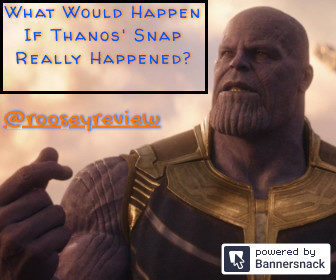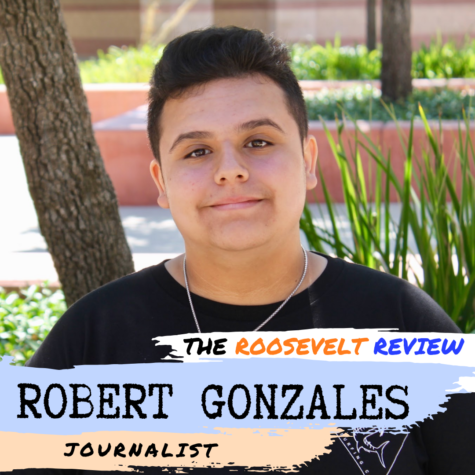If Thanos’s Snap Really Happened

May 27, 2019
In the ending of Infinity War, Thanos “The Mad Titan” seized the Infinity stones and, with the snap of his fingers, utterly decimated life everywhere.succeeds in snapping his fingers to eliminate half of all life across the universe. His goal? To save overpopulated societies and planets by giving survivors more resources, living space, and ecological benefits, evading the catastrophe that befell his home planet, Titan. But what would actually happen to Earth if Thanos’ success in Avengers Infinity War was a reality? Erik Voss of New Rockstars breaks down each of the ways human society would change, our safety, our food, our technology, our leisure activities, our religion, and whether Thanos’ snap would improve our lives at all in the video below. How does the world respond to Thanos’ snap in the comic series Marvel’s Infinity Gauntlet? What was the weirdest thing to happen to humanity the last time half of us died (the Black Death pandemic in the Middle Ages), and could it happen again?
The consequences of the deadly snap were tragic and heavily felt, leaving Earth’s mightiest heroes and audiences feeling helpless and lost. The impact of the snap was easily felt as we watched these characters, some of whom we’ve spent a decade getting to know, blow away in the wind. It was personal, individual, and real.
Junior, Ivan Gamboa gave his thought on everything saying, “I feel like society itself would begin to deteriorate come close to collapsing and life as we know it would cease to exist.
However, The “snapture” didn’t just wipe out 50 percent of life, chosen at random, but, as confirmed by Kevin Feige, the president of Marvel Studios, it turned exactly half of the population of each individual species to dust. It wasn’t just half of all humans that disappeared, but half of all giraffes, of all sunflowers, of all Salmonella enterica bacteria, and so on. The jury is out on viruses, but if half of those disappeared too then we can finally classify them as “life” and be done with it.
The entire purpose of this mass murder was to free the remaining populations of sentient life from the burden of not having enough resources to go around, something that led to a societal collapse on Thanos’ homeworld, Titan.
On the most basic level, this is 100 percent a bad idea because it won’t stick. Humans have been undergoing exponential population growth for their entire history. In 1960, the human population hovered around three billion. Then, by the year 2000, another 3 billion of us had appeared. If you wiped out half of all humans, in another 40 years, we’d likely be back to the same population numbers.
The same applies to most species. According to Ken Lacovara, a paleontologist at Rowan Universtiy, “Historically, companies that harvested seals, whales and other animals tended to wipe out half the population immediately when they moved into a new area. In most cases, he said, a 50 percent cull would put those animals at their maximum rate of population growth–at least, until they reach numbers that the environment can no longer sustain.”
With that in mind, the “snaptastrophe” is, “not a strategy that would produce long-term population effects in the way Thanos intended,” said Lacovara. It might, however, produce some strange changes to the sorts of lifeforms that rule the various corners of the world.
Janet Hoole, an expert in animal behavior and human evolution at Keele University, explained that there will be a species imbalance depending on survival strategies. Those that have plenty of young and don’t spend much time on parental care, ensuring rapid reproduction, will be able to out compete species that have fewer offspring, less often, but put more resources into them.
It’s easy to consider the cost of the decimation to humans and other animals. But plants, while easily forgotten, might be the biggest threat of all to life on Earth.
So much of our global ecosystem depends on them. Not only do they perform a vital service in converting carbon dioxide into breathable oxygen, but they are the first step in the chain of converting the Sun’s light into consumable calories.
While creature comforts are nice, there is a short list of things which are necessary for us to keep on milling around this planet, and plants are responsible for the really important ones, air and food.
Half the plant life on Earth means half the conversion of carbon dioxide to oxygen. There would be half the number of breathing animals, so it wouldn’t be an immediate problem. But as we’ve already discussed, the doubling time of species varies. The various recoveries of stilted species would happen at different rates, throwing the balance of the planet’s ecosystem wildly out of balance.
In the end, it’s likely that Thanos’ magic solution is anything but. His decimation would truly be a worldwide extinction event grander even than his imaginings.
It’s probable that life on Earth would endure. It endured the Permian extinction which saw the loss of 96 percent of all species, but the world on the other side of the snap would be very different than the one we know.
Large animals like us would have the hardest time, while smaller ones with fewer survival requirements would see a boon. You can expect rat populations to explode after their initial recovery and they might even bring catastrophic diseases with them.
The loss of half of our loved ones would only be the first, and maybe the least, of our worries. But that purple disseminator of death would have worries of his own.
What he doesn’t realize is that the game isn’t over and that all will unfold in Avengers: Endgame.

